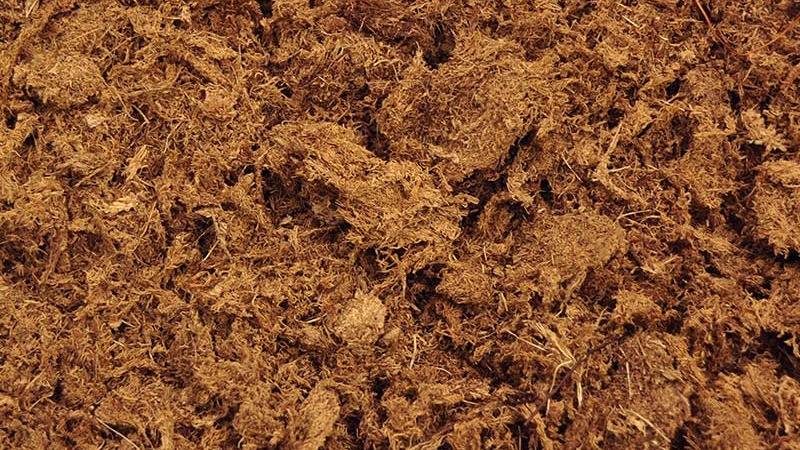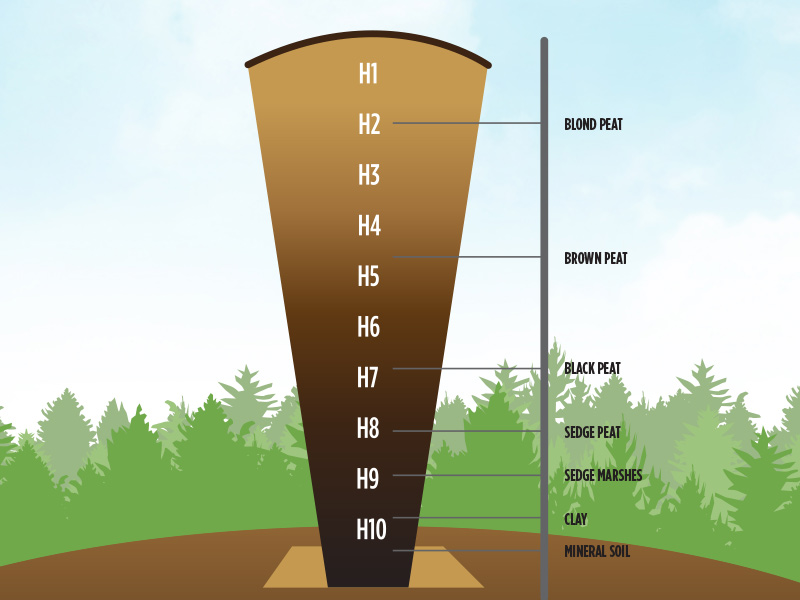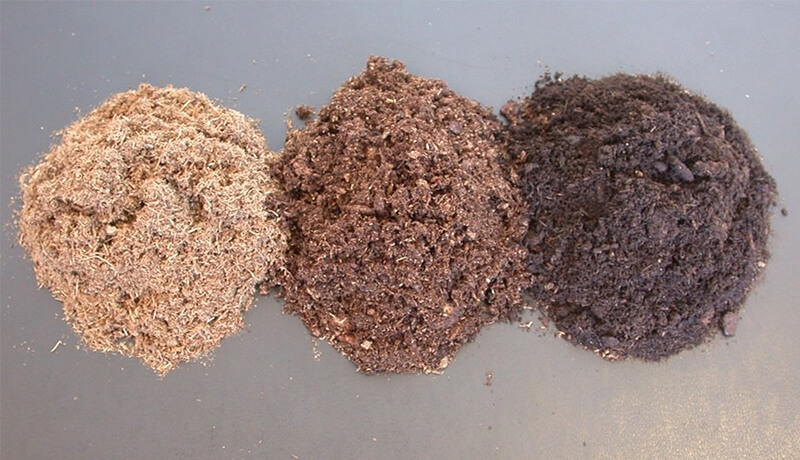What Are the Grades of Peat Moss


How Has Peat Moss Formed?
One of the most important ingredients of soilless substrates, peat moss, began in peat bogs shortly after the last ice age about 12,000 – 14,000 years ago. As the glaciers receded, depressions were left in the earth that collected precipitation from rain and snow. The acid pH and low nutrient content of the water combined with the cool northern climate was conducive to the growth of sphagnum moss and the accumulation of peat moss.
Over time, the environment of low evaporation, acidic pH and low oxygen limited the decomposition of the vegetation.
Across Canada, different types of peat formed, depending on the vegetation in the wetland area. However, sphagnum moss is predominant.
Sphagnum Moss Vs. Sphagnum Peat Moss
While they sound similar, sphagnum moss and sphagnum peat moss are not the same.
Sphagnum moss is a non-vascular plant (no roots) which grows on the surface of the peatland. Over time, dead portions of the sphagnum moss sink and accumulate in the water. After thousands of years, what remains is a thick material called sphagnum peat moss.
In short, sphagnum moss is a plant, and sphagnum peat moss is the decomposed sphagnum plant organic matter which is harvested in bogs. Read our article on peatland management for more information.
Different Degrees of Peat Moss
Since it’s a natural product, peat moss has different degrees of decomposition depending on its depth, and not all peat moss grades are adequate for a particular blend you will find on the market.
If you were to take a cross-section of a peat bog from top to bottom, you would see that the surface is composed of recently accumulated peat moss that is blonde in color and fibrous in texture, compared to the lower sections of the bog that contain peat that is more humified, dark brown and less fibrous.
Field grades of peat moss are screened, blended, and processed to achieve specific physical properties for market grades and intended use. Market grades are based on coloration of the peat moss and the particle size passing through different mesh screen sizes (10, 20, 50 and 100 mesh screens).
Field grade: Von Post Scale
Raw sphagnum peat moss is graded using the Von Post scale to determine the level of decomposition and humification. The scale ranges from H1 to H10, with H1 being totally un-decomposed plant material and H10 being completely decomposed. Position on the scale is based on peat moss color, fiber content and color of water squeezed from a sample.

For example, H1 grade is completely undecomposed peat which, when squeezed, releases almost clear water. Plant remains are easily identifiable. H4 is a slightly decomposed peat which, when squeezed, releases very muddy dark water. Plant remains are slightly pasty and have lost some of their identifiable features. H10 is a completely decomposed peat with no discernible plant structure; when squeezed, all the wet peat escapes between the fingers.
In North America, most peat moss harvested is in the range of H1-H5. Different grades and colors of peat moss are a result of age, decomposition, and depth within the peat bog.
Peat Blending and Market Grading
Once the peat moss is harvested, different grades are typically blended to achieve specific physical properties. This is because a specific Von Post grade peat moss may not be adequate for the market type.
For instance, H1, being blond and very fibrous, will shrink in containers over time when used alone as a growing media. H5 is dark brown and is very good for gardening, but it is often blended since alone it can be heavy.
Some of the common market grades of peat include black, coarse/chunk, horticulture grade, fine, forestry and so forth.

Black peat
“Black peat” is a very dense, fine particle peat moss that is highly decomposed. It is sometimes used for blocking substrates for starting vegetable seedlings, such as lettuce.
It is usually blended with other types of peat depending on the type of crops grown. It is popular with mushroom producers for mushroom casing mixes. It is also used as a soil conditioner for consumer products and sold as peat humus.
Coarse/Chunk
“Coarse/Chunk” is the most fibrous, blonde chunky peat moss. Because of its medium water retention capacity and porous structure for high aeration, it is most often used for azalea, camellia, bulbs, orchid mixes and when a highly porous growing medium is needed for large containers.
Horticulture grade
“Horticulture grade”, also called “medium/coarse” grade, is the most popular, widely used grade of peat moss. It is a blend of H1-H3 grades and has a fibrous consistency that provides a high degree of water retention and air porosity to help promote plant root development.
It is most often used for flowering plant and vegetable production in flats to larger pots and baskets, mushroom production, and nursery container mixes.
Fine
“Fine” is a short-fiber peat moss that is specially processed for use in small-cell propagation, starting seeds, plug production, hydroseeding and construction of golf greens and tees. It is fine peat that is screened from H1-H3 grades of peat moss and is ideal for applications that require debris-free peat moss.
Forestry
“Forestry” is a medium-fiber peat moss that is specially processed for use in small-cell propagation of forestry seedlings. It is peat that is screened from H1-H3 grades of fibrous peat moss and is free of sticks.
In summary, sphagnum peat moss is suitable for a wide variety of growing needs. When determining the grade to be used for the production of plants, a grower should select it based on the needs of the plant and the physical characteristics and particle size of the peat moss that match those needs.
Choosing the correct grade of peat moss will help ensure that the plants to be grown have the best chance for success.